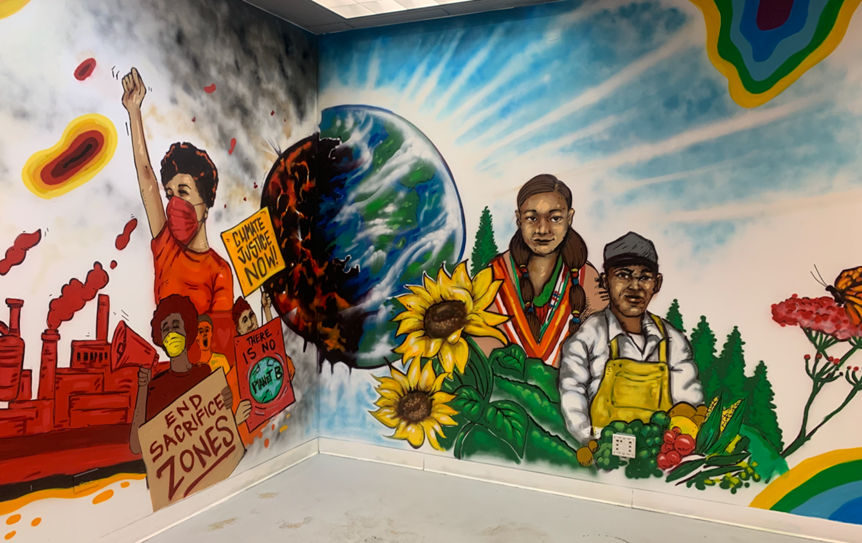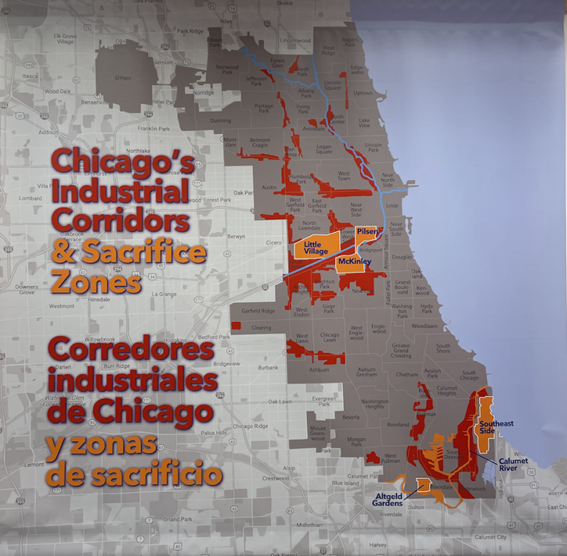Climates of Inequality exhibit highlights local and global environmental justice movements
x

The UIC Rafael Cintrón Ortiz Latino Cultural Center (LCC) and the UIC Social Justice Initiative (SJI) hosted the Climates of Inequality: Stories of Environmental Justice exhibition, displayed at the Chicago Justice Gallery (1344 South Halsted) from October 2023 through May 2024. In collaboration with community organizations Alianza Americas and Little Village Environmental Justice Organization (LVEJO), the student-curated exhibition showcased tales of environmental justice and community resilience, highlighting the critical need for environmental justice education, particularly for young people.
x

For those it most directly affects–particularly people of color, low-wage earners and Indigenous and Black communities–the climate crisis is nothing new. Rather, it is an ongoing cycle of excessive environmental harms they have been resisting for generations. The experiences of seven such communities across the world were featured in the exhibition as they deal with the environmental racism that has historically existed in each of their localities–legacies that are currently making the climate catastrophe worse.
These narratives were developed in cooperation with more than 500 students, educators and environmental justice activists in more than 20 cities in the US, Puerto Rico, Colombia and Mexico as part of a global participatory public memory project coordinated by the Humanities Action Lab, a coalition of colleges and universities across the US and internationally partnering with environmental/climate organizations and cultural institutions on this project as well as a national curriculum.
With a focus on climate change as a social justice problem, the Chicago section of Climates of Inequality told the story of the city from Little Village to a number of “sacrifice zones,” including Pilsen, the Southeast Side, McKinley Park, Altgeld Gardens and the Calumet River. Through the contributions of local artists, residents and students, this exhibition recognized the dedication of frontline communities to combating climate injustices and constructing a more suitable future.
Every display was bilingual, with Spanish being the second language. By providing material in both English and Spanish, the exhibition acknowledged and valued the linguistic backgrounds of numerous affected communities, making the subject matter more accessible, helpful and impactful for visitors.
x

“I came to the Climates of Inequality exhibit not really knowing what to expect, but I definitely left with a deeper understanding of how interconnected our struggles are and how important it is to advocate for environmental justice,” said Dallace Foster (‘25), who attended the exhibit without any prior knowledge of the effects of environmental injustice on Latine communities.
“I was super moved by the stories and art pieces and it really made me realize how important community resilience is and how we need to actively learn more about these situations. I couldn’t believe I was unaware of so much of the injustices in the city I live in, let alone all these other communities who really need support.”
Climates of Inequality: Stories of Environmental Justice was more than just an exhibition; it was a call to action. With a core emphasis on understanding the interrelated struggles of many communities against environmental injustices and the necessity of inclusive action and education, this exhibit served as an important educational tool that highlighted the need to raise awareness and participate in climate justice concerns, especially for young people. Interacting with different narratives and points of view was not only enlightening for visitors, but also crucial for helping to develop knowledgeable and involved citizens who can support a more equitable and sustainable global future.